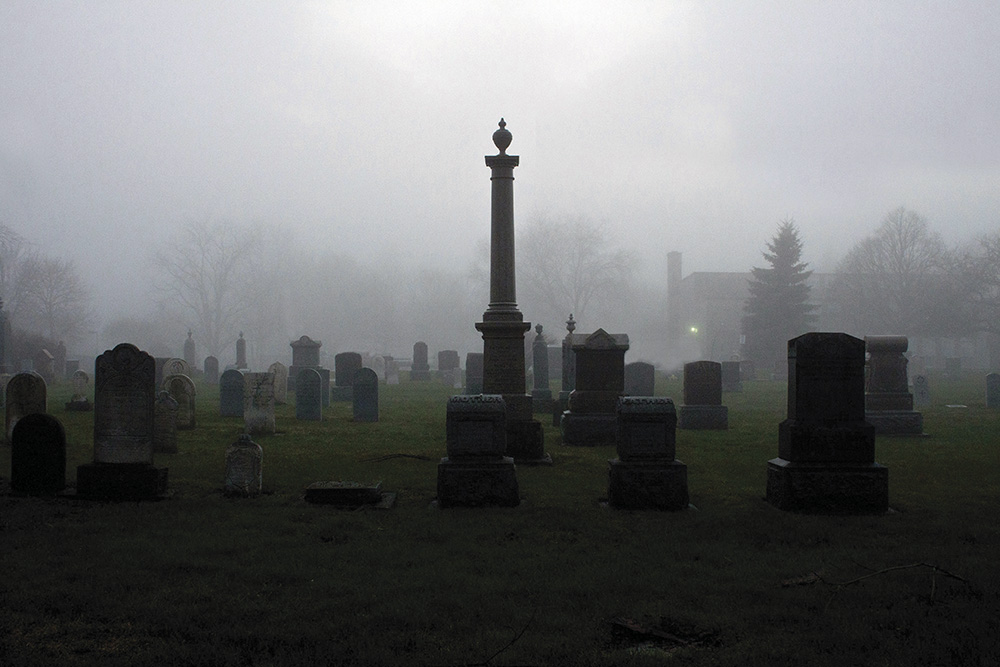Resurrecting Mary: Chicago’s most famous ghost-in-residence

By Maureen Callahan
Legends. Every corner of the world has them. Local lore is part of a location’s identity.
One dyed-in-the-wool staple of this area is the story of a young girl on her way home from an evening ball. Since the Roaring Twenties, Resurrection Mary has managed to elude dance hall patrons and cab drivers alike in south suburban Cook County. The number of sightings by credible witnesses spins a yarn nine decades in the making.
There are several versions of this story. Most are a variant of the vanishing hitchhiker tale. Locals tell of a young blond woman in a white ballgown who requests a ride somewhere along Archer Avenue between Willow Springs Road and Ashland Avenue, only to vanish on or before arrival at her destination. Details vary, but she is usually coming from a dance hall or nightclub.
The roots of the story originated at the Oh Henry Ballroom in Willow Springs almost a century ago. A young woman named Mary and her boyfriend attended a dance. Late that evening, the two got into a heated argument. Mary stormed out into the dark night and walked home alone along Archer Avenue. She was struck and killed by a motorist somewhere between the dance hall and Resurrection Cemetery. The driver – never identified – left her for dead.
Since her death almost a century ago, Resurrection Mary has appeared many times. Encounters with the ghost vary, from full-on conversations to an image that vanishes seconds after it appears.
Ten years after Mary’s death, a Southsider named Jerry Palus approached a young blond woman at a dance hall. She introduced herself as “Mary.” The two danced the night away. In the midst of their good time, however, Palus noticed her hands were ice cold. At the end of the evening, he offered her a ride home.
Although Mary claimed to be a Southsider, she asked him to take her up Archer Avenue in the opposite direction. Palus was confused but did as she asked. As the car approached Resurrection Cemetery, Mary abruptly told him to slow down. Without ever opening the door, she vanished before his eyes.
The next morning, shaken and confused, Palus went to the address Mary had given him the night before as her home. When her mother answered the door, he inquired about the woman he had met the previous evening.
Although the description matched Mary’s identity, she informed him that her daughter had died a few years earlier.
The next few decades brought several sightings. A cab driver in the 70s reported a young woman standing in front of Resurrection Cemetery one night. She disappeared when he pulled over to check if she needed a ride.
Later that decade, another cab driver claimed to have picked up a female hitchhiker in her early twenties. As they drove along Archer Avenue, she startled the driver into making a sudden stop. When he turned to the backseat to be sure it was where she wanted to be dropped off, she was gone.
Mary showed herself to Clare and Mark Rudniki in 1980 as the pair drove down Archer Avenue near Resurrection Cemetery. A young woman in a white gown wandered slowly along the roadside. The couple claim a white aura surrounded her as if she were glowing. They drove by, shocked.
As they turned the car around to verify the spot Mary was walking, she disappeared. Nine years later, Janet Kalal and a friend were passing the cemetery when a woman in a white gown jumped in front of the car. There was no sound, however, and no damage or impact to the car.
Over the years, countless sightings have been reported by passersby of a ghastly young blond woman walking through Resurrection Cemetery in the dark.
Was Resurrection Mary a real person? Paranormal investigators have weeded through more than a hundred thousand graves at Resurrection Cemetery to find the phantom’s identity. Many agree Resurrection Mary is the alter ego of a young woman named Anna “Marija” Norkus. Records corroborate that she was struck and killed by a car one night in 1927 as she walked home from the Oh Henry Ballroom.
Chicago’s version of a vanishing hitchhiker is just that—our version. Similar tales have worked their way into the folklore of many corners of the world. Other variations take the form of South Carolina’s Walhalla hitchhiker, the phantom hitchhiker of Bedfordshire, Great Britain, and the White Lady of Quezon City in the Philippines.
While they’re fun to recount over campfires, local legends might also be reminders that things often look different late at night, and it’s okay not to stop the car!
